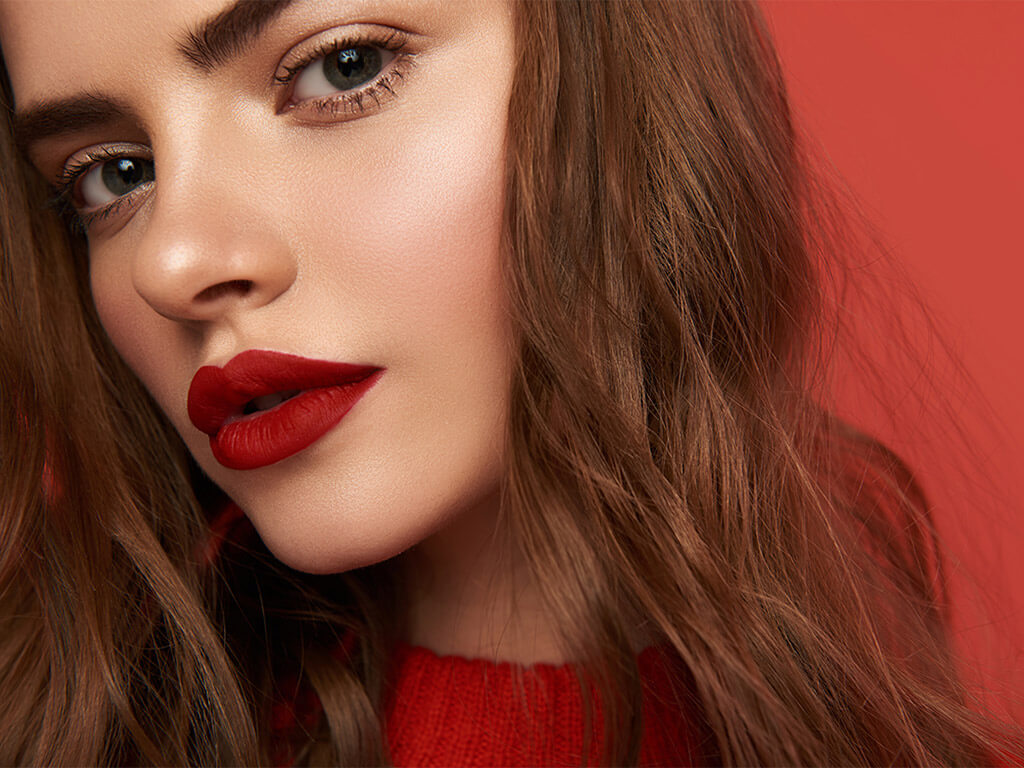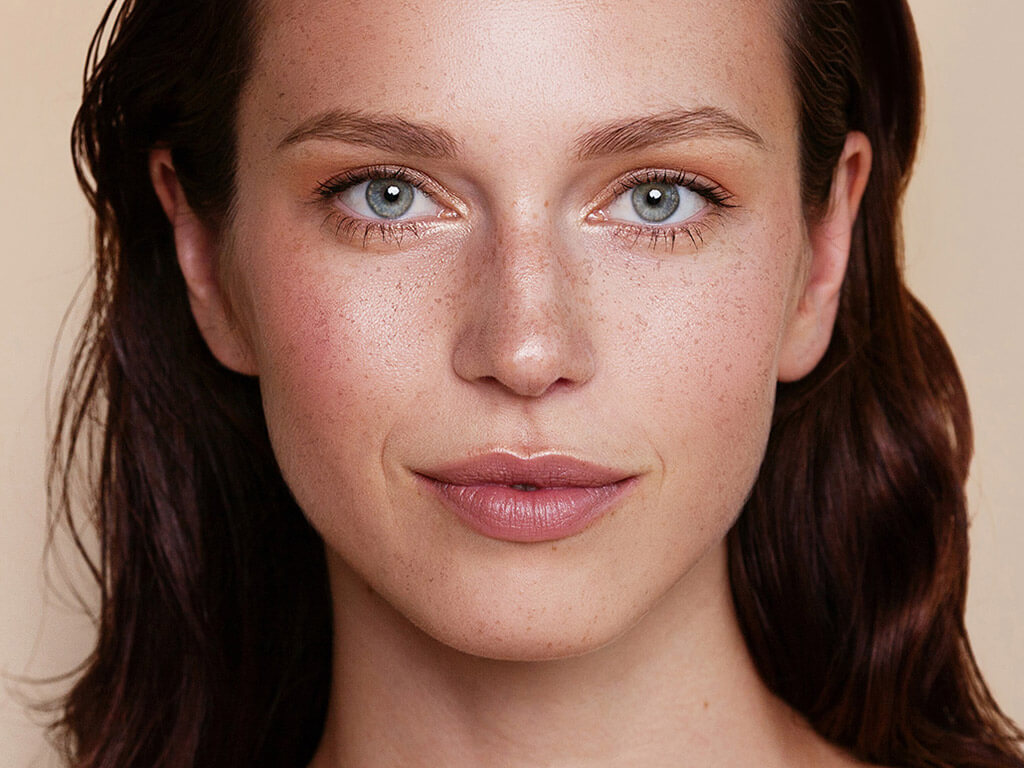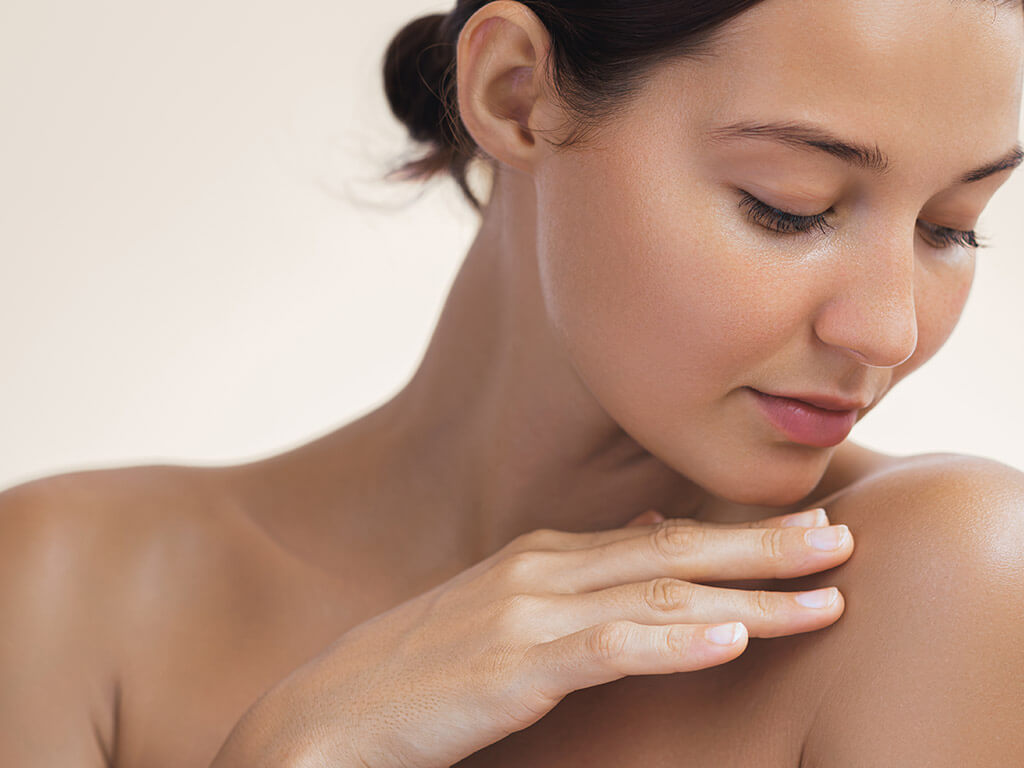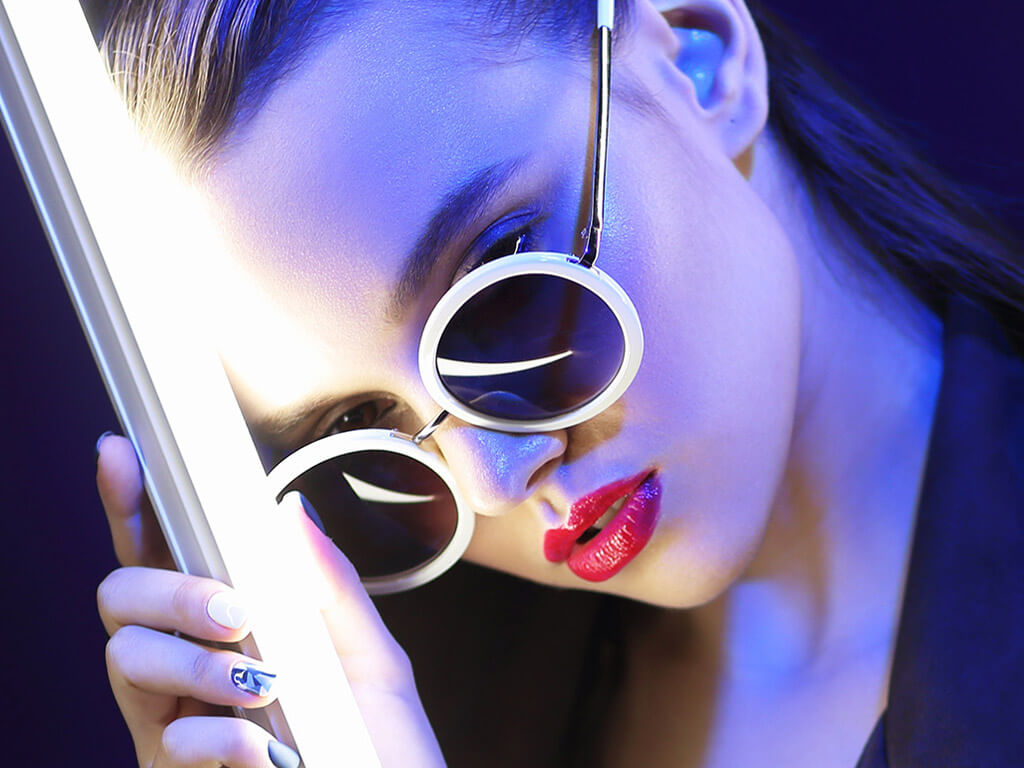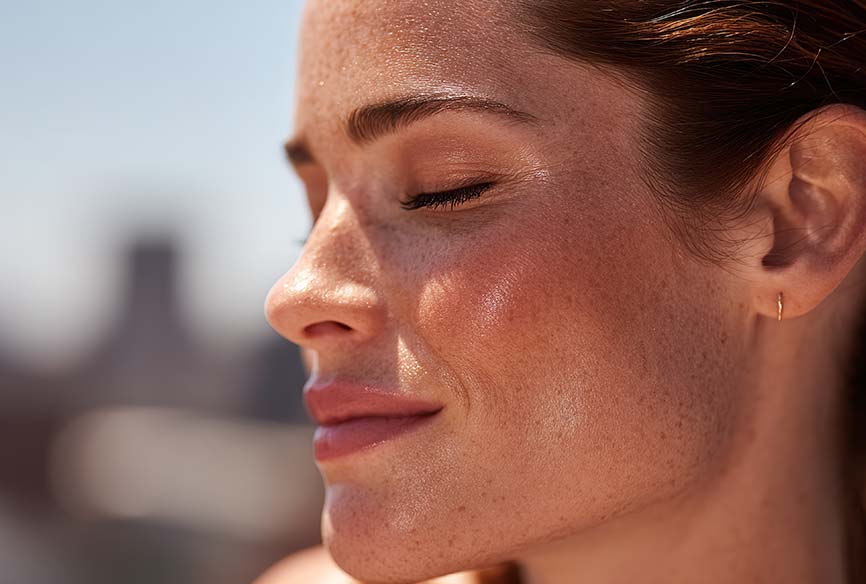The Differences Between UVA, UVB, and UVC
Sunlight contains ultraviolet (UV) radiation, composed of three main types of rays categorized by wavelength:
- UVC (100–280 nm): The shortest and most dangerous UV rays. Fortunately, UVC is completely absorbed by the Earth’s ozone layer and does not reach the skin.
- UVB (280–320 nm): Comprising about 10% of UV radiation that reaches us, UVB is mainly responsible for sunburn, browning, and direct DNA damage that may lead to skin cancers. UVB penetrates the superficial layers of the skin (epidermis).
- UVA (320–400 nm): Accounting for around 90% of UV exposure, UVA rays penetrate deeper into the skin, reaching the upper dermis, particularly the dermal papillae — structures that anchor the epidermis to the dermis. UVA is the primary cause of photoaging, which includes wrinkles, sunspots, loss of elasticity, and even sun-induced acne or rashes. UVA, is also a participator in sunburns, to a lesser extent. Unlike UVB, UVA is present year-round, can penetrate glass and clouds, and leads to oxidative stress, contributing to pigmentation disorders and certain skin cancers.
Decoding UV Protection Ratings: SPF, PA, and More
To choose effective sun protection, it’s essential to understand what the protection factors mean:
SPF (Sun Protection Factor)
- Indicates protection against UVB, the ray that causes sunburn.
- SPF levels:
- Low: SPF 6–10
- Moderate: SPF 15–25
- High: SPF 30–50
- Very High: SPF 50+
- How it works: If your skin naturally burns after 20 minutes in the sun, an SPF 40 theoretically protects you for 800 minutes (20 x 40). However, real-world conditions — sweat, water, rubbing, or insufficient application — reduce this effectiveness.
UVA Protection Systems and their annotations around the world: PA, PPD, and Broad Spectrum
- PA System (Asia): Ranges from PA+ to PA++++, with more “+” indicating stronger protection. While this method is popular, it is not recognised by the EU regulations at the moment.
- PPD – Persistent Pigment Darkening (Asia): a higher PPD score means longer and stronger protection against UVA.
- Broad Spectrum (USA): Indicates coverage of both UVA and UVB, but not all broad-spectrum products offer equal UVA protection — always look for added PA or PPD data if available.
- UVA labelling requirements for sunscreens vary by region, as different regulatory bodies mandate different testing methods.
- Since we are based in the EU, our products comply with the UVA-PF standard—indicated by the UVA logo inside a circle—which confirms that our sunscreens provide reliable and effective UVA protection. Additionally, some of our products, like the Shield day cream (SPF20, PA+++), have been tested for compliance with the PA system, ensuring recognition and the adapted use of the customer!
Choosing the right sunscreen : Filters and Formulation
Sunscreens are formulated using organic (chemical) filters or inorganic (mineral) filters, and sometimes both:
Organic Filters (e.g., Avobenzone, Octinoxate)
- Absorb UV rays and convert them to heat.
- Lightweight, easy to formulate, and pleasant on skin.
- Often require combining multiple ingredients for broad spectrum coverage.
- May degrade under sunlight (photostability issues) and sometimes cause irritation or environmental concerns.
Inorganic Filters (e.g., Zinc Oxide, Titanium Dioxide)
- Reflect and scatter UV radiation.
- Offer broad spectrum, photostable, and non-irritating protection.
- May leave a white cast if not micronized or well-formulated.
- Preferred for sensitive skin, babies, and rosacea-prone individuals.
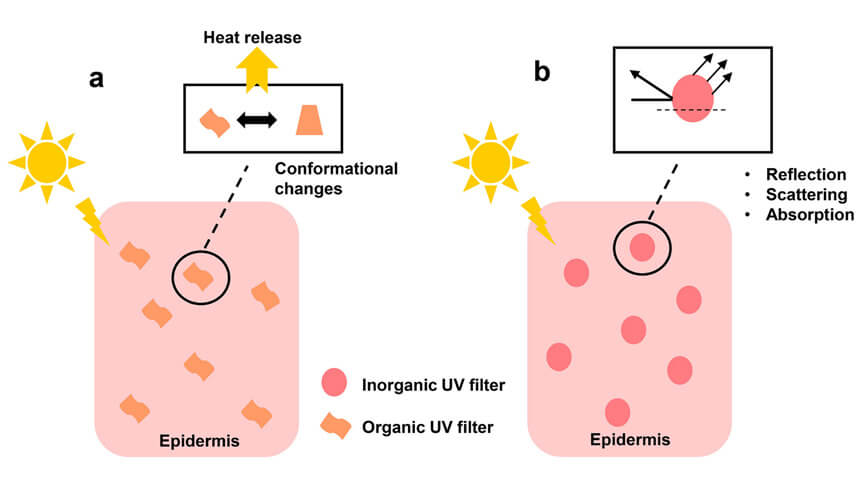
Understanding Your Phototype: The Fitzpatrick Scale
Skin reaction to UV exposure varies with phototype, which influences the type and level of sun protection needed:
Type | Typical Features | Tanning ability |
1 |
Pale white skin, blue/hazel eyes, blond/red hair | does not tan/ always burns, gets sunspots easily and freckles |
2 | Fair skin, blue eyes | Burns easily, tans poorly, high frequency of freckles |
3 | Darker white skin, light to matte skin | Tans after initial burn |
4 | Light brown skin | Burns minimally, tans easily, does not have freckles |
5 | Brown skin | Rarely burns, tans darkly easily |
6 | Dark brown or pigmented/melanated skin | Never burns, always tans darkly |
Note: All phototypes benefit from daily sun protection. Darker skin may not burn easily, but UVA still causes oxidative stress, uneven tone, and premature aging.
Key Precautions for Effective Sun Protection
Even with a high-quality sunscreen, certain precautions enhance its efficacy and your overall safety:
- Application guidelines:
- Apply 20–30 minutes before sun exposure.
- Reapply sunscreen regularly, every 2–3 hours or immediately after swimming/sweating.
- Use about two finger lengths (Half a teaspoon) for the face and neck, and a golf ball size (around 3 tablespoons) for the body.
- Stay out of direct sunlight during peak hours (10 AM – 4 PM) when UV radiation is strongest.
- Cover up with protective clothing, hats, and sunglasses.
- Avoid expired sunscreen: Check the open jar symbol (e.g., “12M”) and discard any product with changes in color, texture, or smell, as they may no longer be effective at protecting you, as labelled on the bottle.
- Avoid photosensitizers: Certain products, like perfumes, can increase sensitivity to sunlight and cause rashes or pigmentation. Those with sensitive skin, should do without, especially if they intend on going out into the sun.
- Be mindful of indirect exposure: UV rays reflect off surfaces like water, sand, and snow. You can burn even in the shade or behind glass (e.g., in a car or office window), depending on the type*.
*Myth Busted: Many people believe you can’t tan or burn through a window, but that’s not entirely true. While most windows block a high percentage of UVB rays (up to 97%), they do not fully block UVA rays, which can still penetrate the glass and affect your skin during prolonged exposure. The type of glass also matters—single-glazed windows allow more UV radiation through than double-glazed or tinted glass. In general, the longer you’re exposed to sunlight, whether direct or indirect, the greater the risk to your skin. Your skin phototype also plays a role in how much protection you need from the sun.
Sunlight and Vitamin D: Finding a balance
While sunscreen is essential for protecting your skin from harmful UV rays, it’s also important to remember that UVB rays help your body produce vitamin D (for strong bones, better mood and a healthy immune system) something you can’t get through windows or while constantly wearing sunscreen. Especially during the winter months, when sunlight is limited, it’s beneficial to get some direct sun exposure. If the UV index is low (lower than 3) and your skin isn’t at risk of burning, spending 10 to 30 minutes in the sun a few times a week without sunscreen can support healthy vitamin D levels.
Recommended Products
Protecting your skin from sun damage doesn’t mean compromising on texture, glow, or performance. These multitasking essentials combine effective SPF protection with hydrating, radiance-boosting skincare, so your skin stays nourished, shielded, and beautifully fresh, every single day:
Your daily defense starts with smart hydration. Formulated for urban living, City Shield Day Cream pairs SPF 20 broad-spectrum protection with a powerful blend of skin-supportive ingredients. A 100% vegetal bioactive complex, along with vitamin C (ascorbyl tetraisopalmitate) and hyaluronic acid, helps defend against pollution and oxidative stress while smoothing texture and maintaining moisture. A must-have for a visibly fresher, more resilient complexion! Its velvety, fast-absorbing texture makes it the perfect base under makeup or worn alone for a radiant, hydrated finish.
Glow, correct, and protect, all in one step. The Binggys Foundation Serum offers sheer-to-medium coverage with a second-skin satin finish, while infusing your skin with powerful skincare ingredients like glycerin, coco-glycerides, and vitamin E. These work together to smooth fine lines, hydrate, and support your skin’s natural water balance. With SPF 25 broad-spectrum filters, it helps defend against both UVA and UVB rays. Lightweight and breathable, it’s ideal for everyday use, suitable for all skin types, even sensitive.
Looking for high sun protection with a natural, luminous finish? Binggys CC Cream checks all the boxes. It combines SPF 50, sheer coverage, and targeted skincare benefits in one easy step. Infused with rockrose extract (also known as the “Vegetal Phoenix” for its powerful regenerative properties), this CC cream helps protect against UV rays, blue light, and pollution, while promoting epidermal renewal. The light creamy texture blends effortlessly, leaving skin hydrated, even-toned, and radiant without a heavy or mask-like effect.
Safety Note: while formulas with SPF 20-30 are perfect for daily protection, in low to mild UV areas situations, it is important to keep in mind that no single product can replace a dedicated high-SPF sunscreen during long days outdoors or intense sun conditions. For optimal protection, we always recommend layering our products with a broad-spectrum sunscreen when the situation demands it. .
Summary: The Takeaway
Protecting your skin from the sun is not a seasonal trend — it’s a lifelong investment in your skin’s health and appearance. UVA and UVB rays work differently but together contribute to the majority of premature skin aging, pigmentation issues, and skin cancer risk. A well-formulated, broad-spectrum sunscreen, applied properly and reapplied regularly, is your most effective defense.
Know your skin. Choose the right protection. And never underestimate the power of the sun.
Disclaimer: This article was written with the support of artificial intelligence (AI). However, all information presented is based on verified scientific sources and has been fact-checked and reviewed by the researchers on our team. We are committed to maintaining accuracy, credibility, and scientific integrity in all published content.
